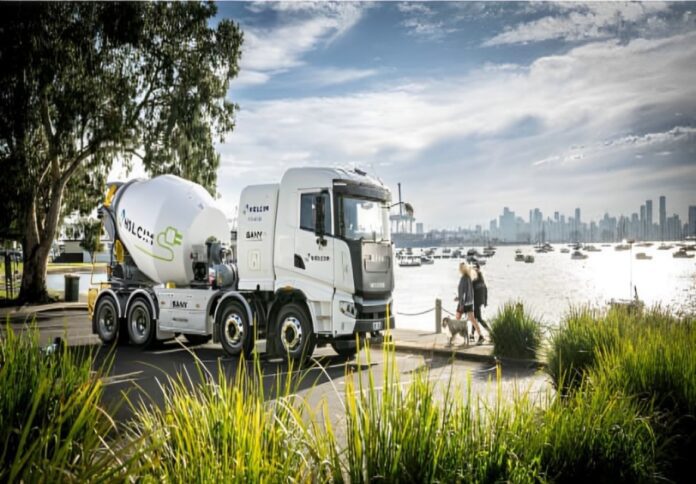
Holcim Australia Pty Ltd, a global leader in sustainable building solutions, has partnered with Putzmeister Oceania to trial Australia’s first 100 per cent electric concrete truck mixer.
The vehicle, a SANY eMixer, marks a major milestone in the construction industry’s transition to carbon-neutral practices, JHolcim said in a news release.
Approved under Australian Design Rules (ADRs), the eMixer is nowAll Posts road-registered and operational, setting new standards in sustainable transport and logistics.
Cyril Giraud, head of Sustainability at Holcim Australia and New Zealand, emphasised the importance of the initiative.
“At Holcim, our commitment to sustainability drives us to continuously improve and innovate. Working in partnership with our suppliers to reduce carbon emissions across transportation and logistics will go a long way in helping us achieve our sustainability goals,” Giraud said.
The trial involves a SANY SY408P Electric Chassis equipped with an Australian-made mixer structure, developed in collaboration with Cesco Australia.
The 350 kWh battery, provided by leading global battery manufacturer CATL, allows the vehicle to operate entirely on electricity, ensuring emission-free concrete transportation from plant to site.
Putzmeister Oceania collaborated with Cesco Australia to adapt the eMixer to Australian requirements. Kevin Peet, Regional Logistics Manager, Concrete Vic/SA, Holcim, highlighted the rigorous testing process.
“The performance of the truck and battery efficiency are being evaluated in metro and urban environments, which have unique operating constraints for ready-mix concrete distribution.”
The eMixer’s battery can be fully charged overnight with a 30-kW charger or rapidly charged within three hours.
Additionally, the truck is quieter and more energy-efficient than diesel alternatives, potentially offering significant operational cost savings.
William Liang, SANY Concrete & Road Machinery sales manager, noted that the eMixer’s lower operating costs and reduced maintenance could result in long-term financial benefits.
“It is more energy-efficient and requires less maintenance, which could result in significant cost savings over the vehicle’s lifetime. This not only makes it a smart financial choice but also aligns with our commitment to sustainability and innovation in the construction industry,” he noted.



















